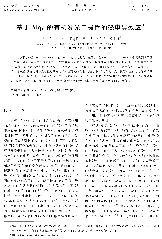摘要
Organic light-emitting diode (OLED) with structure of ITO/CuPc/NPB/Alq(3)/LiF/Al was fabricated, and the magnetic field effect on the injection current (magnetoconductance or MC effect) at 300 K,260 K,220 K, and 180 K were measured at constant voltage bias. During the transition of injection current from bipolar current to unipolar current, the MC of the device increased firstly and fell with the decreasing current. The MC became smaller at the lower temperatures. However, under all measurement conditions, the values of the MC were always positive. The inversion of MC from positive to negative as reported in literatures was not observed. The experimental results demonstrate that the +/- MC effects in OLED not only depend on the unipolar or bipolar current. It is also related with the organic materials and device structure. Using the magnetic field modulated electron-hole pair mechanism and bipolaron model, the positive MC effects in bipolar and unipolar injection current are interpreted, respectively.
- 出版日期2010-8
- 单位西南大学
